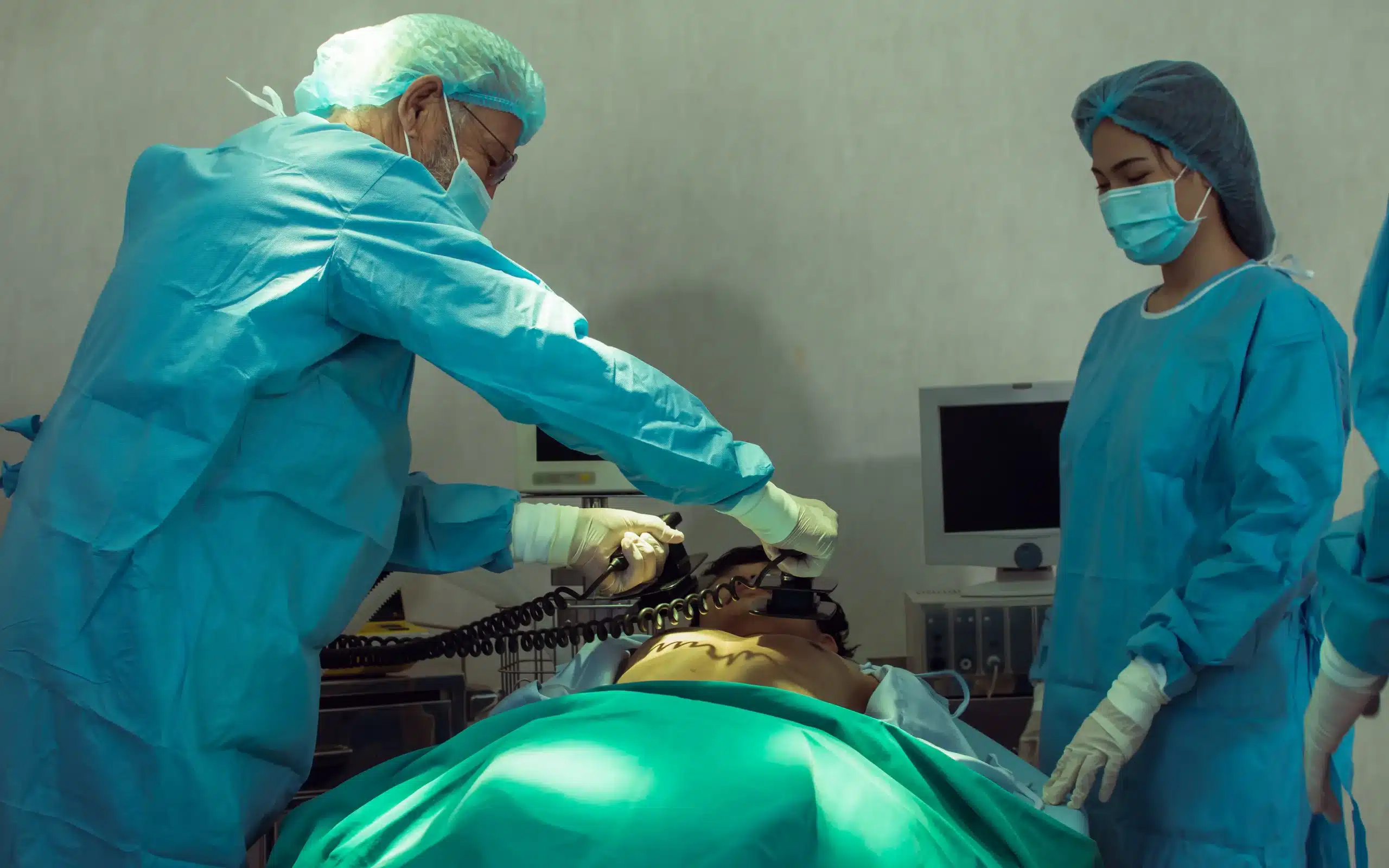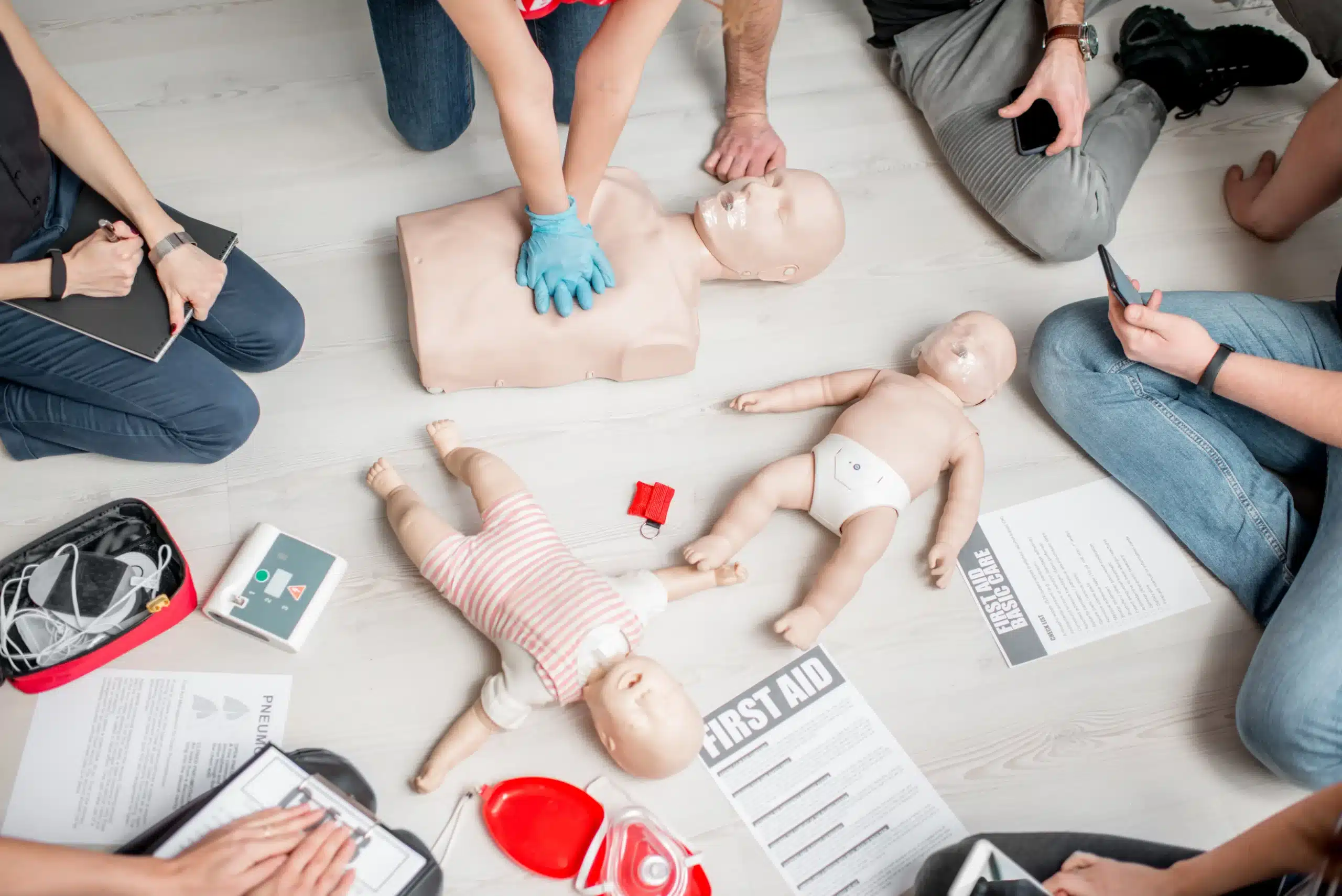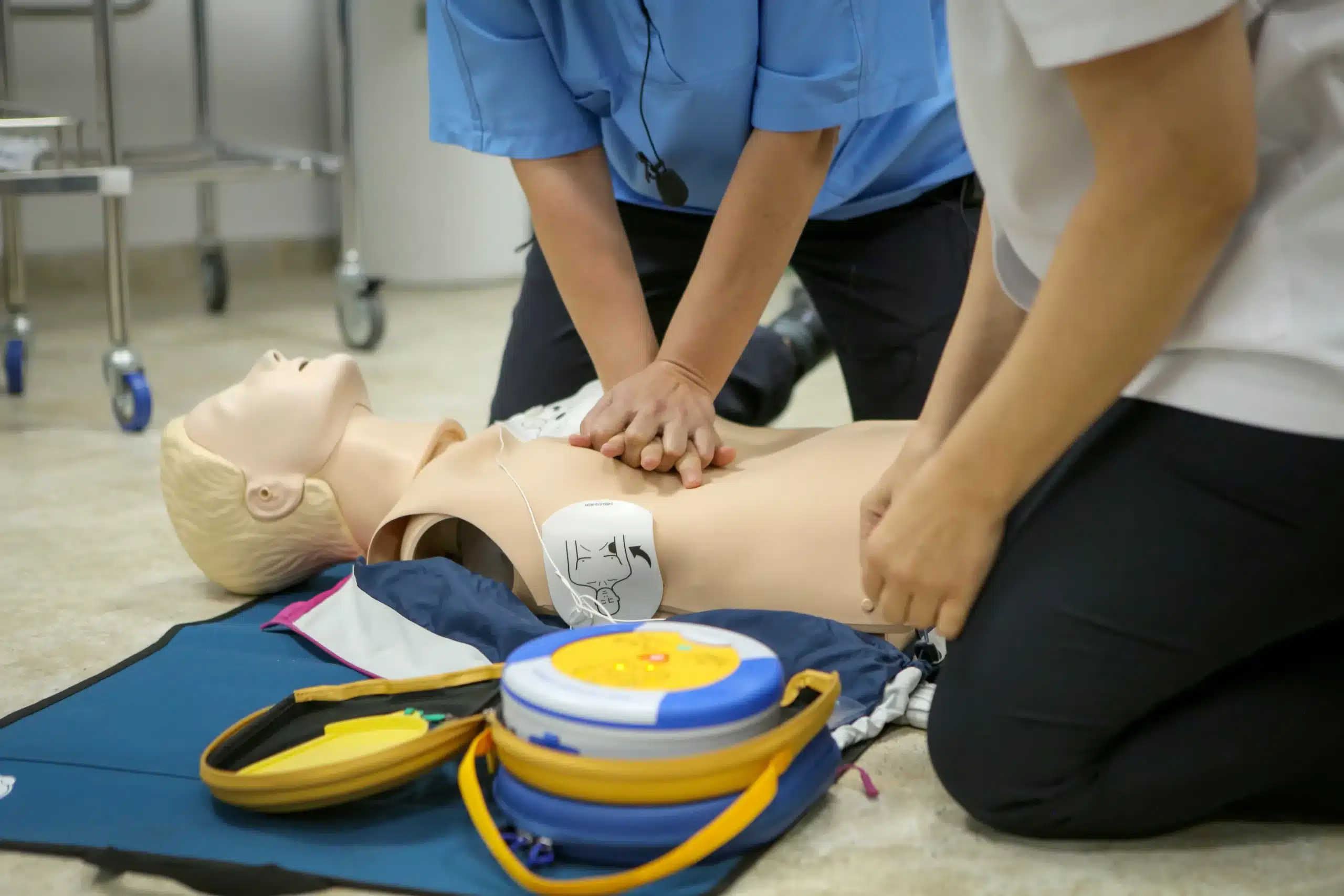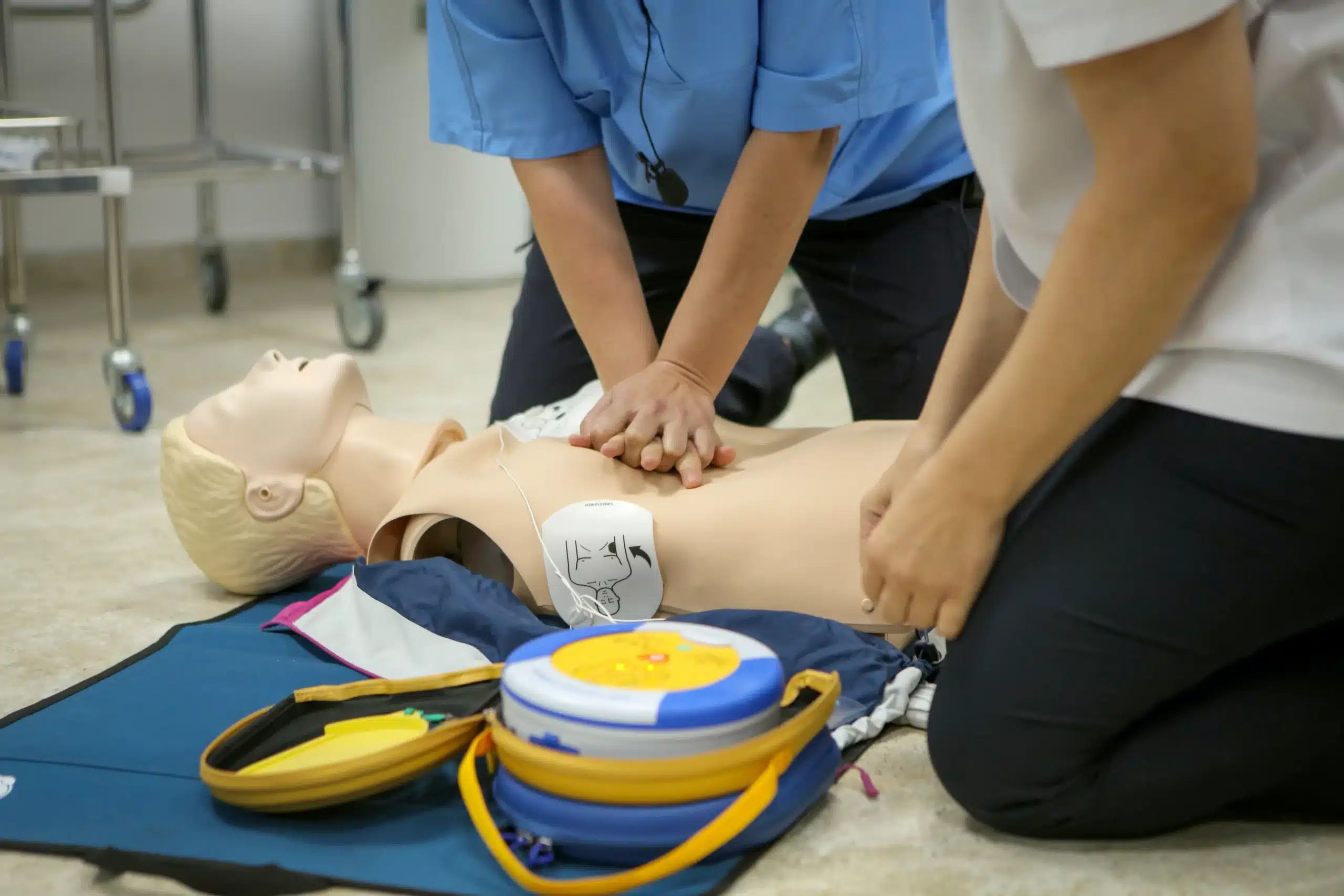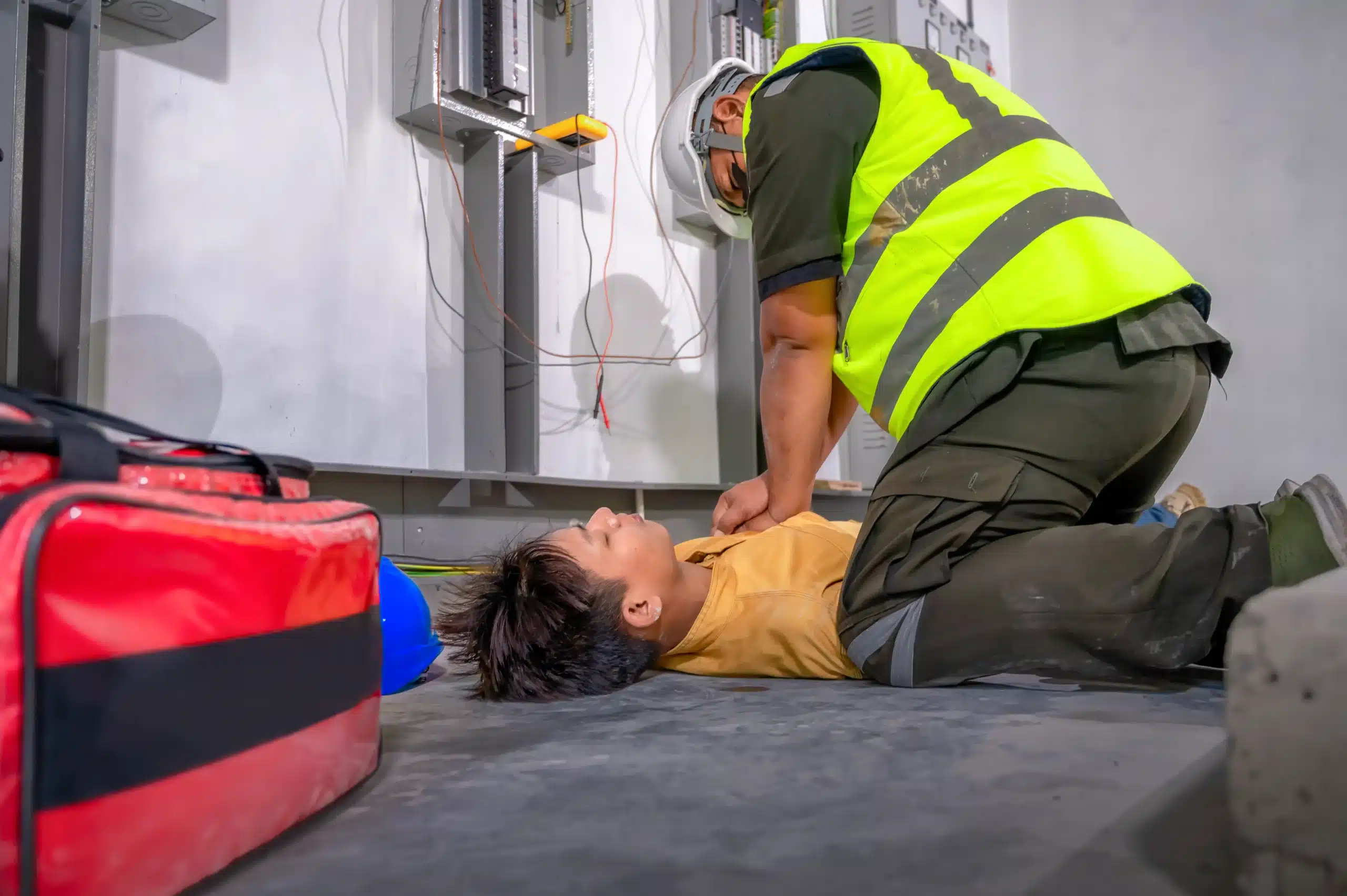Life with a baby is a whirlwind of joy, discovery, and, let’s be honest, a touch of anxiety. As your little one explores the world, you naturally want to protect them from harm. One of the most empowering steps you can take is to become certified in infant CPR. Infant CPR training in Santa Cruz provides you with the skills and confidence to respond effectively in breathing emergencies, a common occurrence with infants due to their still-developing respiratory systems. Knowing how to react quickly can make all the difference in preventing serious complications or even saving your baby’s life. This training isn’t just about acquiring a skill; it’s about gaining peace of mind.
Key Takeaways
- Infant CPR focuses on breathing: Unlike adult CPR, infant CPR primarily addresses respiratory issues, the leading cause of cardiac arrest in babies. Get certified to learn these specialized techniques.
- Rapid response is crucial: Every second matters in an infant emergency. Being CPR-certified empowers you to act quickly and potentially save a life.
- Stay prepared with regular practice: Refresh your skills periodically with refresher courses or practice sessions to maintain your confidence and proficiency in infant CPR.
What is Infant CPR?
Infant CPR is a life-saving technique used on babies under one year old. It’s important to know that infant CPR is different from adult CPR. Because an infant’s body is so much smaller and more delicate, you’ll use two fingers for chest compressions instead of the palm of your hand. This precise method ensures effective compressions without causing injury.
While adults often experience cardiac arrest due to heart attacks, infants typically have breathing problems that can lead to cardiac arrest. Quick action with infant CPR can prevent brain damage or even death, as a baby can suffer permanent brain damage in just minutes without oxygen. For parents, especially as their little ones start exploring and potentially getting into trouble, knowing infant CPR is essential. Safety Training Seminars offers classes in Santa Cruz to help parents prepare for these situations.
Learning infant CPR also prepares you for choking incidents, a common worry when babies start eating solid foods. Understanding how to respond to both choking and cardiac arrest can ease parental anxiety and make mealtimes more enjoyable. This training is invaluable for new parents and caregivers.
Why Infant CPR Matters in Santa Cruz
Knowing infant CPR can make a profound difference in a critical situation. It equips you with the skills to respond effectively and potentially save a life. While we often associate CPR with adults suffering heart attacks, the reality for infants is different.
Common Misconceptions
Many people believe that cardiac arrest in infants stems from heart attacks, similar to adults. However, infants typically experience cardiac arrest following a respiratory issue. Their tiny airways can become easily obstructed, leading to breathing difficulties and ultimately cardiac arrest. This is why quick intervention with infant CPR is so crucial—it can restore oxygen flow and prevent irreversible brain damage or even death. Learn more about the importance of infant CPR.
The Reality of Infant Emergencies
Several unexpected events can lead to a baby needing CPR. Choking, especially as they begin exploring solid foods, is a significant concern. Even purees can pose a risk if a baby isn’t yet adept at swallowing different textures. Other situations requiring infant CPR include suffocation, near-drowning, smoke inhalation, and sudden infant death syndrome (SIDS). In these emergencies, seconds count. A baby’s brain can suffer permanent damage in as little as four minutes without oxygen, and death can follow within four to six minutes. Immediate CPR can bridge this critical gap until professional medical help arrives. Knowing how to dislodge food or clear an airway can resolve a choking incident in a matter of seconds, preventing a life-threatening situation. Understand the various reasons why infant CPR is necessary.
What Happens in an Infant CPR Course?
Knowing what to expect can help you feel more prepared and confident going into your infant CPR class. Here’s a glimpse at what you’ll cover:
Key Skills You’ll Learn
Infant CPR classes equip you with the skills to respond effectively to a choking or unresponsive infant. You’ll learn how to assess the situation, perform CPR specifically designed for infants (using two fingers for chest compressions rather than the palm of your hand as you would with an adult), and how to deliver rescue breaths. Because babies stop breathing for different reasons than adults—often due to respiratory issues—this specialized training is crucial. Understanding these differences is key to providing effective aid. You’ll also learn how to recognize the signs of choking and practice techniques for clearing an infant’s airway. These skills empower you to act quickly and confidently in a critical moment, potentially preventing brain damage or even death.
Course Duration and Certification
Most infant CPR courses are designed to be concise and efficient, typically lasting around two hours. This timeframe allows busy parents to fit the training into their schedules without significant disruption. Upon completion of a certified course like the one offered by Safety Training Seminars, you’ll receive a certification valid for two years. This certification demonstrates your competency in infant CPR and provides peace of mind knowing you’re prepared for emergencies.
Hands-on Practice
Hands-on practice is a cornerstone of effective infant CPR training. While online resources can be helpful, nothing replaces the experience of learning from a certified instructor in person. A qualified instructor can provide personalized feedback and ensure you’re using the correct techniques. Infant CPR classes often incorporate realistic scenarios and simulations, allowing you to practice your skills in a safe and controlled environment. This practical experience builds confidence and prepares you to respond effectively under pressure. This hands-on training is invaluable for developing muscle memory and the confidence to act swiftly in a real emergency.
Where to Find Infant CPR Training in Santa Cruz
Finding the right infant CPR class can feel overwhelming, but several excellent resources are available in Santa Cruz County. Here are a few places to start your search:
Safety Training Seminars
Safety Training Seminars offers various American Heart Association (AHA) certified CPR courses, including infant CPR training. They focus on providing convenient and affordable options for busy parents and caregivers. Check their website for their low price guarantee and course schedules. They offer classes in over 60 cities, making it easy to find a location near you. Their Santa Cruz location serves Santa Cruz, Monterey, and Capitola. You can also contact them directly with any questions.
American Red Cross
The American Red Cross is a well-known provider of CPR training, and their Santa Cruz chapter offers infant CPR classes. These courses cover essential skills needed to respond to emergencies involving infants and young children. Visit their website or contact their local office for class schedules and registration information.
Central Fire District
The Central Fire District offers free monthly CPR classes to the public, including training in infant CPR. These classes are a convenient and budget-friendly option for local residents. Check their website for the most up-to-date schedule and location information.
Adams Safety Training
Adams Safety Training specializes in CPR training for childcare providers and parents. Their infant CPR courses focus on the specific techniques needed to assist infants in emergencies. Contact them directly to learn more about their course offerings and schedules.
Santa Cruz County Health Services Agency
The Santa Cruz County Health Services Agency offers resources for parents and caregivers, including information on various CPR training options in the community. While they may not directly provide infant CPR classes, they can connect you with certified instructors and training centers in the area.
How Much Do Infant CPR Classes Cost in Santa Cruz?
Knowing the cost of infant CPR classes helps you budget and plan accordingly. Let’s break down the typical expenses and explore some money-saving options.
Average Price Range
Infant CPR classes in Santa Cruz usually cost around $120. This typically covers the online portion of the BLS course, the in-person skills evaluation, and your official American Heart Association certification card. Our BLS course at Safety Training Seminars follows this pricing model, ensuring you receive comprehensive training and certification at a reasonable price.
Factors Affecting Cost
Several factors can influence the final price. Some training centers may bundle infant CPR with other certifications like First Aid, which could increase the cost. The type of course, the training provider, and included materials can also play a role. At Safety Training Seminars, we offer a range of CPR classes, including ACLS and PALS, each designed for different needs and experience levels. Contact us to discuss the best option for you.
Discounts and Package Deals
Many CPR training providers offer discounts, so it’s always a good idea to ask! You might find discounts for group classes, student rates, or special offers for parents. Safety Training Seminars is committed to affordable training and has a low price guarantee for BLS renewals, making it easier to stay current on your certification.
Free and Low-Cost Options
If cost is a major concern, free or low-cost options are available. The Central Fire District in Santa Cruz County offers free monthly CPR classes open to the public. This is a valuable resource for parents and caregivers. These classes teach essential infant CPR skills, giving you the confidence to handle emergencies. Check their website for the most up-to-date schedule.
How to Choose the Right Infant CPR Class
Finding the right infant CPR class can feel overwhelming, but focusing on a few key factors makes the process easier. Prioritizing qualified instructors, a comfortable class size and format, and convenient scheduling options will ensure you get the most from your training.
Instructor Qualifications
The instructor’s expertise is the cornerstone of any good CPR class. Look for certified instructors with extensive experience teaching infant CPR. A great place to start is by checking if the training center is an American Heart Association (AHA) Training Center, like Safety Training Seminars. AHA-certified instructors meet rigorous standards, giving you confidence in the quality of instruction. You can find more information on their BLS certification course on their website. Instructors should also be knowledgeable, patient, and able to answer your questions thoroughly. Don’t hesitate to contact them beforehand to discuss your specific needs and concerns.
Class Size and Format
Think about what kind of learning environment works best for you. Smaller class sizes often provide more personalized attention from the instructor and more opportunities to practice your skills. Hands-on training with realistic scenarios is crucial for building confidence. Check if the class includes practice on infant mannequins and opportunities to ask questions in a supportive environment. Safety Training Seminars, for example, prioritizes hands-on learning and offers classes in Santa Cruz and nearby areas like Monterey and Capitola.
Scheduling Flexibility
Life with a little one can be unpredictable, so finding a class that fits your schedule is essential. Look for training centers that offer classes on various days and times, including weekends and evenings. Safety Training Seminars offers classes daily, making it easier to find a time that works for you. They also have a low-price guarantee, so you can be confident you’re getting a good value. Consider whether you prefer an in-person class or a blended learning option that combines online coursework with in-person skills practice. Knowing your scheduling needs and preferences will help you narrow down your options and choose a class that fits seamlessly into your busy life.
Common Concerns About Infant CPR Training
It’s normal to have a few questions before signing up for an infant CPR class. Let’s address some common concerns:
Is Online Training Enough?
While online resources can be helpful supplements, they shouldn’t replace in-person infant CPR training. Hands-on practice with a certified instructor is essential to develop the muscle memory and confidence you need to respond effectively in a real emergency. A qualified instructor can give you personalized feedback and correct any mistakes in your technique.
Fear of Causing Harm
Many parents worry about hurting their baby during CPR. It’s natural to feel hesitant, but remember that prompt CPR can prevent brain damage or death if an infant stops breathing. Certified instructors teach safe and effective techniques, easing your fears and empowering you to act confidently in a crisis. Babies stop breathing for different reasons than adults—often respiratory issues that lead to cardiac arrest, not heart attacks, which are more common in adults. This is why knowing infant CPR is so important.
Who Needs This Training?
Anyone who cares for infants, including parents, grandparents, babysitters, and other caregivers, should learn infant CPR. It’s especially important for those caring for newborns and infants just starting solids, as they are at higher risk of choking. Knowing how to respond quickly and effectively can make all the difference. A comprehensive CPR course covers not only CPR but also how to respond to choking incidents.
Prepare for Your Infant CPR Training
Getting ready for your infant CPR training is key to making the most of it. Here’s what you should consider:
-
Understand the importance of infant CPR. Infant CPR is critical because, unlike adults, babies often stop breathing due to breathing problems, not heart issues. As EMC CPR Training points out, quick, effective CPR can prevent brain damage or even death, making it a vital skill for every parent and caregiver.
-
Choose the right training course. While online resources exist, an infant CPR course from a certified instructor is always best. Hands-on training in a safe environment lets you learn and practice the correct techniques, ensuring you’re prepared for a real emergency. This article also emphasizes the importance of instructor-led training for proper technique.
-
Consider comprehensive programs. Look for courses that offer in-depth instruction, including video demonstrations and lifetime access to course materials. A comprehensive program will cover CPR, choking response, and even injury prevention, setting you up for success.
-
Start early. The American Heart Association recommends that children can begin learning life-saving skills like CPR as early as age four. This underscores the importance of being proactive about learning these skills to keep your family safe. If you’re a parent, grandparent, or caregiver, consider getting trained sooner rather than later.
By preparing for your infant CPR training, you’ll gain the confidence and skills to respond effectively in an emergency.
Maintain Your Infant CPR Skills
Knowing infant CPR is vital, but it’s not something you learn once and forget. Like any skill, your infant CPR techniques can fade over time. Regular practice and recertification are key to staying sharp and ensuring you’re ready to respond effectively in a real emergency. It’s similar to renewing your driver’s license—you need to refresh your knowledge and skills periodically.
Why is ongoing practice so important? Infants often experience breathing emergencies due to respiratory issues like choking or infections, rather than cardiac problems. Infant CPR techniques address these specific situations, and they differ from adult CPR. Quick, effective intervention can be crucial in preventing brain damage or even death. Regular practice builds your confidence and ensures you can correctly administer aid when every second counts. EMC CPR & Safety Training offers more information on the importance of infant CPR and how it differs from adult CPR.
How can you stay up-to-date? Consider enrolling in refresher courses or attending workshops periodically. The American Red Cross offers various CPR recertification courses to help you maintain your skills. Another engaging way to practice is by hosting or attending an infant CPR party with other parents. This creates a supportive learning environment and helps everyone stay prepared together. For a comprehensive program covering CPR, choking response, and injury prevention, check out resources like the Safe Beginnings course offered by My Little Eater. They even provide lifetime access to their materials, allowing you to review the information and keep your skills fresh. Staying proactive about maintaining your infant CPR skills is one of the most important steps you can take to protect your little one.
Additional Resources for Infant Safety in Santa Cruz
Beyond infant CPR training, Santa Cruz offers several valuable resources to support parents and caregivers in ensuring their little one’s safety. These resources can complement your CPR training and provide a well-rounded approach to infant care.
Community Organizations and Support:
-
Central Fire District: Check with the Central Fire District for potential CPR classes and other community safety initiatives. They often serve as a hub for valuable resources. You can find their contact information and potential class schedules on their website.
-
Santa Cruz County Health Services Agency: This agency provides various health and safety programs for families, including resources on child safety and injury prevention. Explore their website for more information.
Specialized Training and Information:
-
Safety Training Seminars: In addition to infant CPR, Safety Training Seminars offers other safety courses that can benefit parents and caregivers. See their website for a full list of courses and schedules. They are a great local resource for comprehensive safety training.
-
The American Red Cross: The American Red Cross offers a wealth of resources on first aid, car seat safety, and home fire safety. Visit their website to access online resources and find local classes.
Online Resources and Support Groups:
-
HealthyChildren.org: This website, run by the American Academy of Pediatrics, offers evidence-based information on child health and safety topics. It’s a reliable source for parents seeking guidance on everything from feeding to sleep to injury prevention. Explore their resources.
-
Local Parenting Groups: Connecting with other parents in Santa Cruz can provide valuable support and shared experiences. Look for local parenting groups on social media or through community centers. These groups can offer a sense of community and a platform to share information.
Related Articles
- Pediatric CPR & First-Aid Classes in Santa Cruz – Santa Cruz CPR Classes
- Why CPR is the Lifesaving Skill Everyone Should Know
- Debunking CPR Myths for Lifesaving Confidence
- CPR Certification for Childcare Providers in Santa Cruz – Santa Cruz CPR Classes
- CPR Classes in Santa Cruz: Find the Right One For You – Santa Cruz CPR Classes
Frequently Asked Questions
Why is infant CPR different from adult CPR? Infant CPR differs significantly from adult CPR due to an infant’s smaller and more delicate body. Instead of using the palm of your hand for chest compressions, you’ll use two fingers. This gentler approach ensures effective compressions without causing injury. Also, while cardiac arrest in adults is often caused by heart attacks, it typically follows a breathing problem in infants.
What are the most common causes of cardiac arrest in infants? Cardiac arrest in infants rarely stems from heart problems. It’s usually a secondary issue arising from breathing difficulties. Choking, especially when starting solids, is a major concern. Other causes include suffocation, near-drowning, smoke inhalation, and SIDS. Because these emergencies cut off oxygen supply, rapid intervention with infant CPR is crucial.
What will I learn in an infant CPR class? An infant CPR class will teach you how to assess an unresponsive infant, perform infant-specific CPR (using two fingers for compressions and rescue breaths), and clear an obstructed airway. You’ll also learn to recognize the signs of choking and practice techniques to dislodge obstructions. This training equips you to respond confidently in various emergencies.
How long does infant CPR certification last, and where can I get recertified? Infant CPR certification typically lasts for two years. Recertification is essential to maintain your skills and stay up-to-date on any changes in CPR guidelines. Organizations like the American Red Cross and Safety Training Seminars offer recertification courses. Regular practice and refresher courses ensure you’re always prepared to respond effectively.
Besides CPR, what other resources are available for infant safety in Santa Cruz? Santa Cruz offers various resources beyond CPR training to support infant safety. The Central Fire District and Santa Cruz County Health Services Agency provide valuable information and potential programs. Organizations like Safety Training Seminars offer additional safety courses, while online resources like HealthyChildren.org and local parenting groups provide ongoing support and information sharing. These resources complement CPR training and offer a holistic approach to infant safety.
